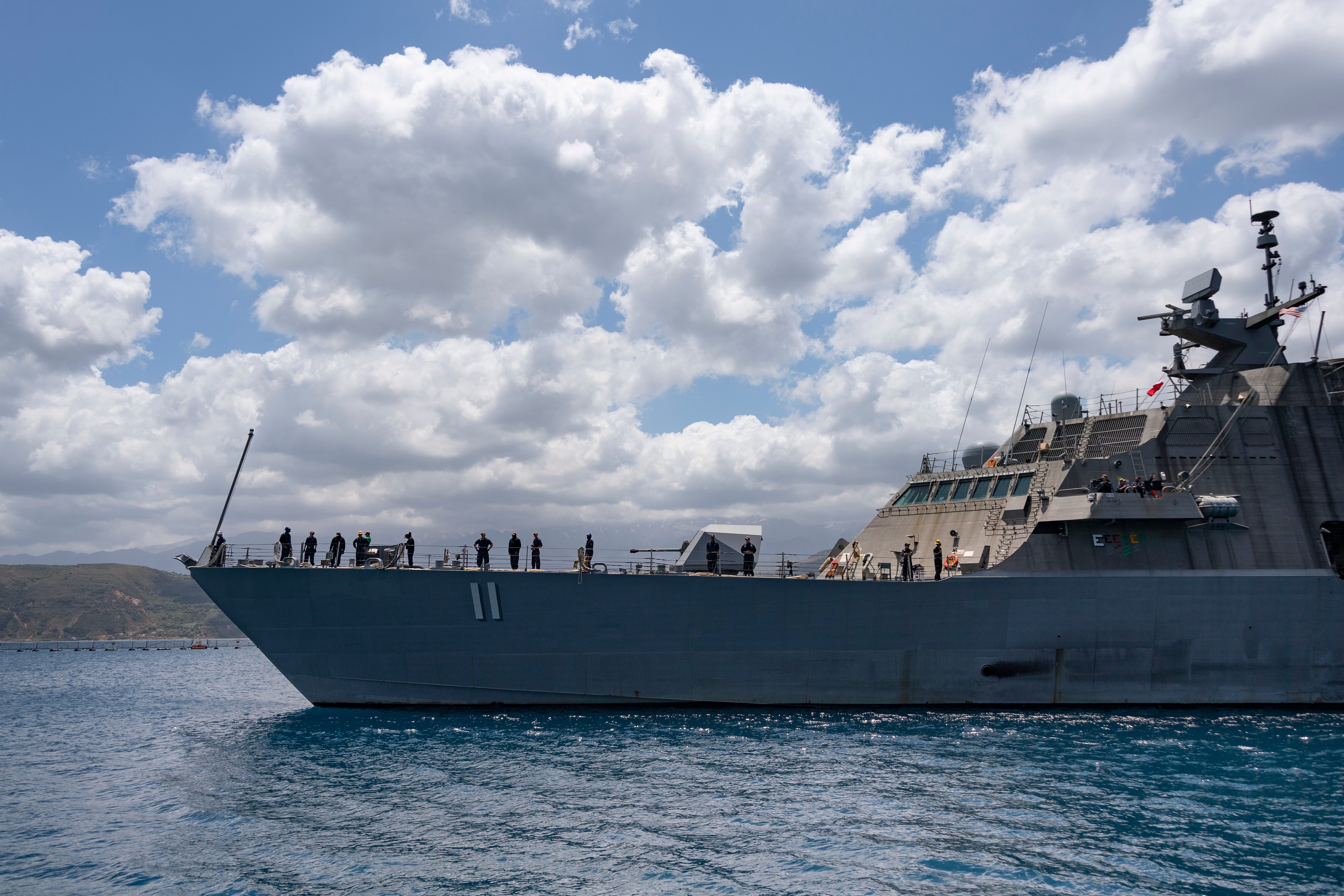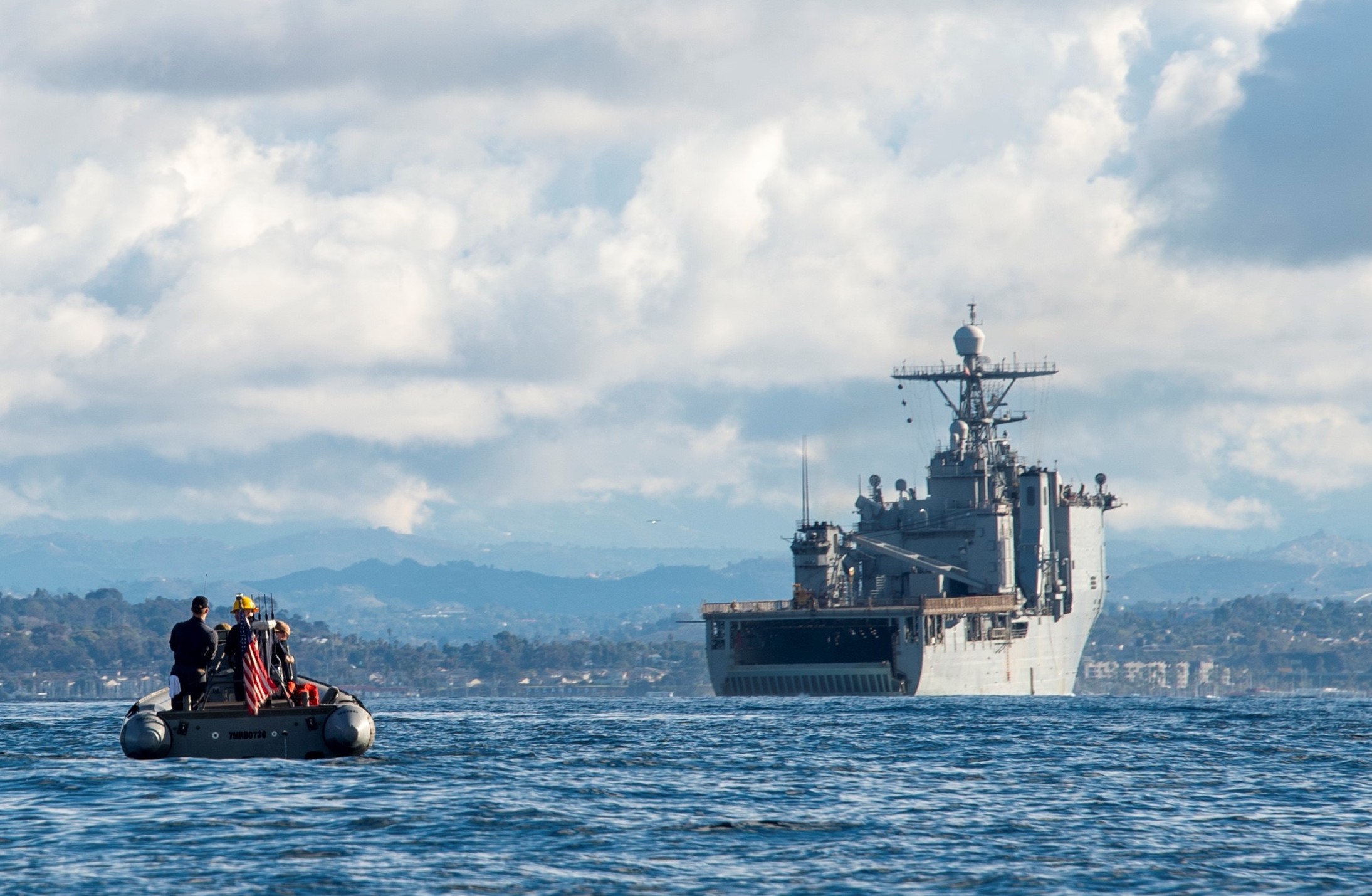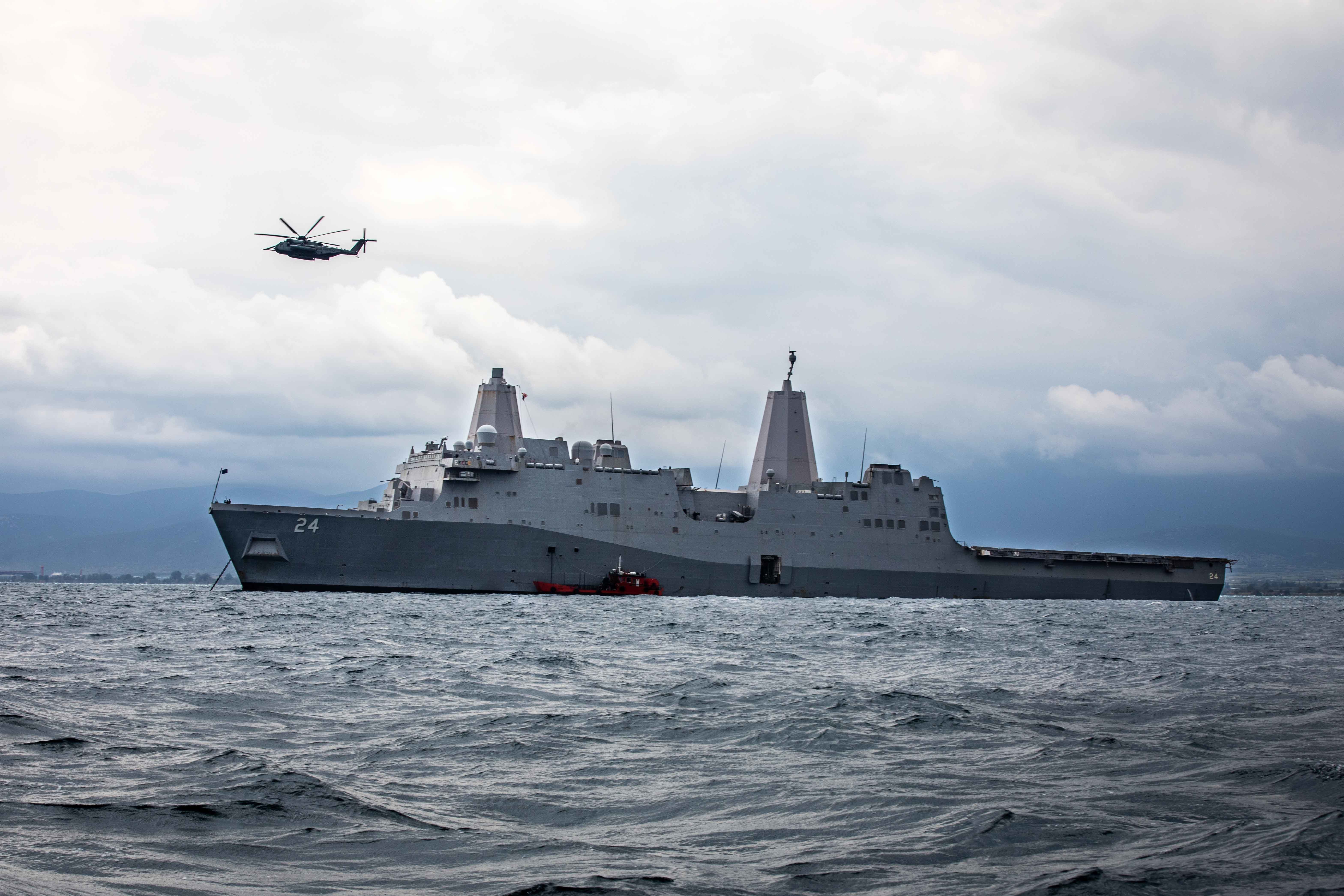
The House Armed Services Committee will allow the Navy to move ahead with plans to decommission the troubled Littoral Combat Ships and wants to shutter the Pentagon’s Cost Assessment and Program Evaluation office.
In its mark of the Fiscal Year 2024 defense policy bill, the HASC seapower and projection forces subcommittee prevents the Navy from retiring three Whidbey Island-class dock landing ships and two Ticonderoga-class guided-missile cruisers but did not include the same provision for the two Littoral Combat Ships the Navy wants to decommission.
The legislation marks an inflection point in the ongoing debate over the troubled program, which the Navy has tried aggressively to divest of in its last several budget proposals amid a class-wide problem for the Freedom-class variant ships and a strategy shift to blue water operations that require a different set of capabilities.
A senior Republican aide told reporters Monday that the full HASC chairman’s mark prioritizes ways to deter China in the Indo-Pacific region.
“You’ll see that throughout our bill, especially with the Pacific Deterrence Initiative – divesting from some of these old legacy platforms that are not survivable in the Indo-Pacific region against a very capable adversary. We’re really taking a hard look and making some tough choices on things we don’t think we need anymore, as we’re confronting a 21st-century military,” the aide said.
The Navy has floated the possibility of transferring the LCS ships it wants to decommission to allies. USNI News understands that Mexico is interested in the ships.
The Navy’s FY 2024 budget proposal sought to decommission 11 ships: dock landing ships USS Germantown (LSD-42), USS Gunston Hall (LSD-44) and USS Tortuga (LSD-46); cruisers USS Antietam (CG-54), USS Leyte Gulf (CG-55), USS Cowpens (CG-63) and USS Shiloh (CG-67); Independence-class LCSs USS Jackson (LCS-6) and USS Montgomery (LCS-8); and Los Angeles-class submarine USS San Juan (SSN-751). Jackson and Montgomery – built in Mobile, Ala., by Austal USA – were commissioned in 2015 and 2016, respectively, and each slated for 25-year service lives.

Under the FY 2024 seapower mark, the Navy cannot decommission cruisers Shiloh and Cowpens and amphibs Germantown, Gunston Hall and Tortuga.
That decision comes after Marine Corps officials argued publicly that the Navy should not decommission the LSDs, despite their age, because the Navy is not building the new San Antonio-class Flight II ships on a cadence that would replace them one-for-one.
The Navy has paused procurement of the San Antonio-class amphibious warships so it can assess both cost and capabilities for amphibs. Decommissioning the Whidbey Island-class ships would cause the amphibious ship inventory to dip below the 31 amphibs that Marine Corps Commandant Gen. David Berger says he needs and that Congress wrote into law as the floor for amphibious ships in the FY 2023 policy bill.
The HASC seapower mark, released Monday, authorizes the Navy to buy nine battleforce ships: one Columbia-class ballistic-missile submarine, two Flight III Arleigh Burke-class destroyers, two Virginia-class attack boats, two Constellation-class frigates, one San Antonio-class LPD-17 Flight II amphibious transport dock, and one John Lewis-class fleet oiler for a $32.3 billion shipbuilding budget.
The Navy’s original $32.8 billion request sought one next-generation submarine tender replacement known as AS(X) and did not ask to buy a San Antonio-class amphib, but lawmakers made the swap in the mark.
Asked why the panel did not include the new submarine tender, a second senior Republican congressional aide noted the mark authorizes $248 million for that program – the Navy asked for $1.73 billion – and said the subcommittee had to make cuts due to the new limits on defense spending that were agreed to during the debt ceiling negotiations.
“We’ve incremented the funding. We’ve provided money to do advanced procurement and to give the ship – the ship we need – under contract and to begin production. But because we wrote a bill at [the Presidential Budget Request], we needed to find savings. So we looked very closely at what in the request was executable in FY 2024 and that full amount was not executable in FY 2024,” the aide said of the new sub-tender.
The chairman’s mark of the HASC bill, also released on Monday and which includes the funding tables, authorizes $750 million for LPD-33, a ship the Navy did not ask to buy yet. Lawmakers have voiced frustration over the ongoing Office of the Secretary of Defense-directed halt to LPD procurement and the first Republican aide cited that pause as a reason why the full committee’s mark seeks to abolish OSD’s Cost Assessment and Program Evaluation office.
“Congress set a floor for 31 amphibs for the Navy and CAPE is studying whether or not that’s the right number. Congress made that determination and that is the requirement now for the … Marines, but CAPE is going in and telling members: ‘I don’t know if that’s the right one and we may not let them do that.’ But statutorily we have put in 31 amphibs. So I think members are very confused as to why CAPE thinks they can come back and determine they’re not going to listen to Congress,” the aide said.

That aide said they were not sure who would perform CAPE’s job – the provision permits the Defense Secretary to decide where to place those duties – but suggested other budget personnel in the Pentagon could do the work.
“I think members have found CAPE to both slow down the acquisition process and keep adding money to programs or requirements to programs that Congress has already authorized and funded at certain levels,” the aide told reporters.
The HASC chairman’s mark, which lawmakers will mark up next week, authorizes a total of $886 billion for national defense.
“In terms of real dollars, this is a cut because of inflation,” the first aide said, noting HASC chairman Rep. Mike Rogers (R-Ala.) would ideally authorize more funding defense if it were up to him.
While the House and Senate armed services committees have authorized a boost in defense spending the last two budget cycles the deal recently struck between President Joe Biden and House Speaker Kevin McCarthy (R-Calif.) prevents that kind of increase.
Lawmakers will mark up the HASC subcommittee bills this week.





